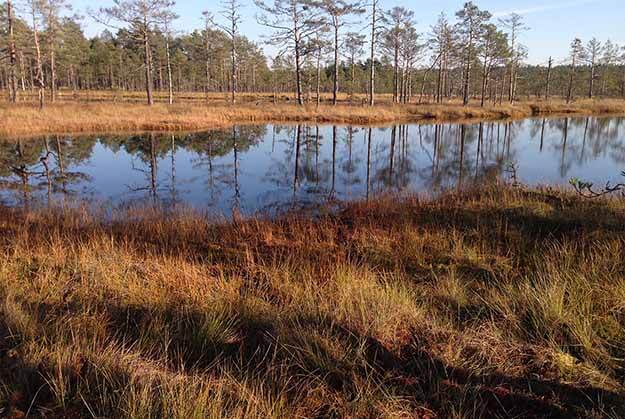
Viru bog in North Estonia. Photo by Kart Ulman / VES
ERR News – During the Soviet occupation, the total area of peatlands in Estonia decreased almost 2.8 times. Now large scale wetland restoration project is underway to rectify the situation.
According to the Estonian Fund for Nature (ELF), Estonia currently has 240,000 hectares (2,400 square kilometers) of bogs and wetlands – 5.3 percent of its entire landmass. Due to Soviet land improvement programs that drained large marshes for economic gain, that is almost 2.8 times less than back in 1950.
ELF, in cooperation with the University of Tartu and NGO Arheovisioon, has now launched a project to reverse the process by restoring the natural hydrological systems of drained areas. This should help to improve the conditions for birds, amphibians and dragonflies.
Bogs regulate climate and pollution levels by binding carbon. They also serve as natural water reservoirs.
The project currently involves six wildlife reserves, including two old peat cutting fields.
Draining bogs and marshlands not only destroys the habitat of many species, but also heavily fuels climate change. Bogs bind large amounts of organic carbon that, when suddenly exposed to the air, decomposes and turns into carbon dioxide (CO2), which is released into the atmosphere.
Moreover, lack of suitable wetland environments poses a serious threat species like capercaillie and red grouse.
In addition to restoring the natural hydrosystem, researchers will pay special attention to archaeological sites in these areas and oral traditions connected to them.
“Working our way through literary and local history gives us a better understanding of how locals have defined themselves in relation to the bogs, which opportunities these wetlands have provided and which they have taken away, and what is the point of contact,” said Jüri Ott Salm, who heads the project.















